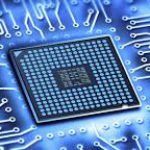Why it is used ?
Virtual memory is used to increase the apparent size of the physical memory. Data are addressed in a virtual address space that can be as large as the addressing capability of the processor. But at any given time, only the active portion of this space is mapped onto locations in the physical memory. The remaining virtual addresses are mapped onto the bulk: storage devices used, which are usually magnetic disks. The virtual address space is mapped onto the physical memory where data are actually stored. The mapping function is implemented by a special memory control circuit, often called the memory management unit.
virtual memory
Physical main memory is not as large as the address space spanned by an address issued by the processor. When a program does not completely fit into the main memory, the parts of it not currently being executed are stored on secondary storage devices, such as magnetic disks. Of course, all parts of a program that are eventually executed are first brought into the main memory. When a new segment of a program is to be moved into a full memory, it must replace another segment already in the memory. The operating system moves programs and data automatically between the main memory and secondary storage. This process is known as swapping. Thus, the application programmer does not need to be aware of limitations imposed by the available main memory.
Techniques that automatically move program and data blocks into the physical main memory when they are required for execution are called virtual-memory techniques. Programs, and hence the processor, reference an instruction and data space that is independent of the available physical main memory space. The binary addresses that the processor issues for either instructions or data are called virtual or logical addresses. These addresses are translated into physical addresses by a combination of hardware and software components. If a virtual address refers to a part of the program or data space that is currently in the physical memory, then the contents of the appropriate location in the main memory are accessed immediately. On the other hand, if the referenced address is not in the main memory, its contents must be brought into a suitable location in the memory before they can be used.
above Figure shows a typical organization that implements virtual memory. A special hardware unit, called the Memory Management Unit (MMU), translates virtual addresses into physical addresses. When the desired data (or instructions) are in the main memory, these data are fetched as described in our presentation of the ache mechanism. If the data are not in the main memory, the MMU causes the operating system to bring the data into the memory from the disk. The DMA scheme is used to perform the data Transfer between the disk and the main memory
